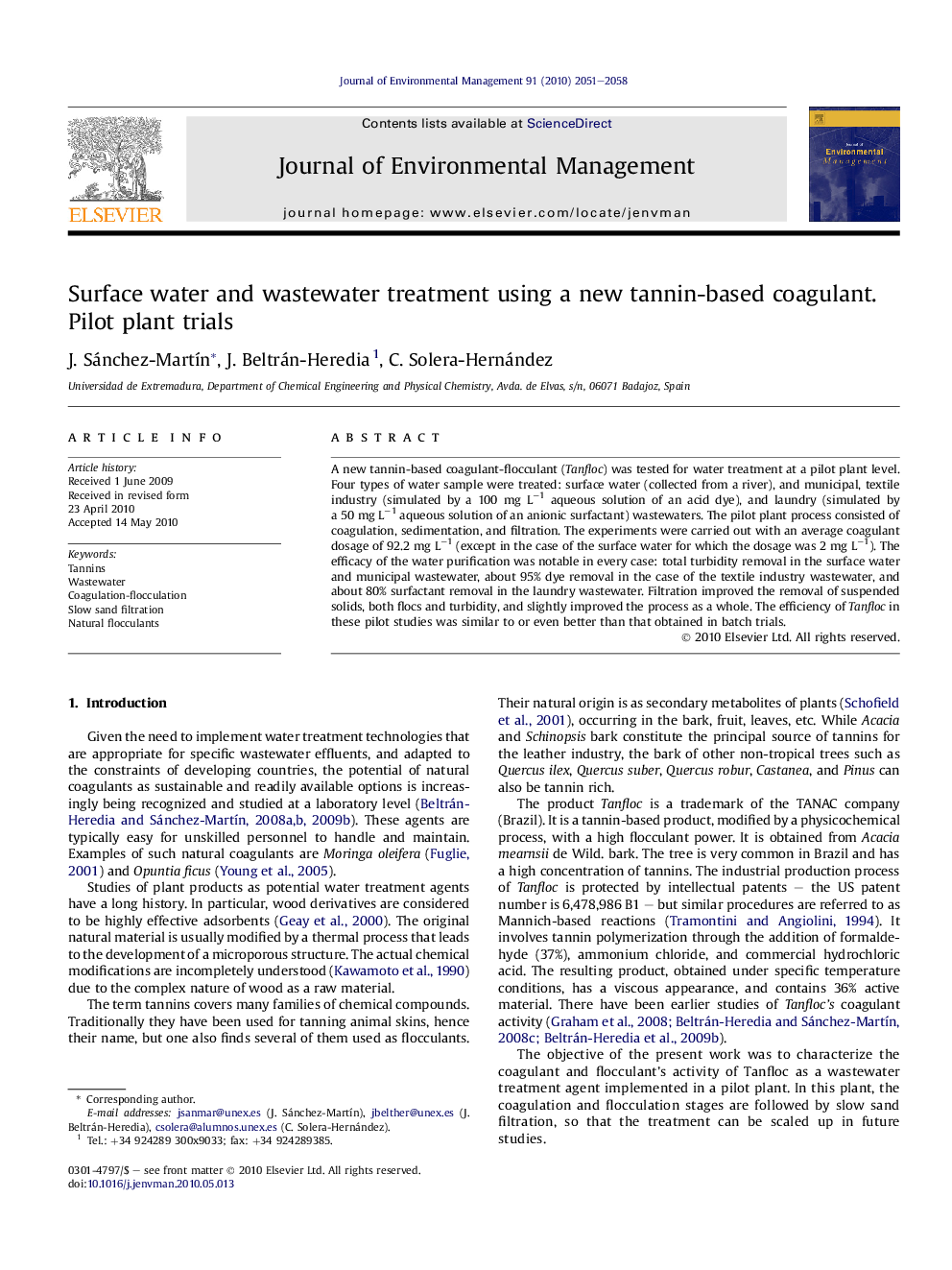| Article ID | Journal | Published Year | Pages | File Type |
|---|---|---|---|---|
| 1057350 | Journal of Environmental Management | 2010 | 8 Pages |
A new tannin-based coagulant-flocculant (Tanfloc) was tested for water treatment at a pilot plant level. Four types of water sample were treated: surface water (collected from a river), and municipal, textile industry (simulated by a 100 mg L−1 aqueous solution of an acid dye), and laundry (simulated by a 50 mg L−1 aqueous solution of an anionic surfactant) wastewaters. The pilot plant process consisted of coagulation, sedimentation, and filtration. The experiments were carried out with an average coagulant dosage of 92.2 mg L−1 (except in the case of the surface water for which the dosage was 2 mg L−1). The efficacy of the water purification was notable in every case: total turbidity removal in the surface water and municipal wastewater, about 95% dye removal in the case of the textile industry wastewater, and about 80% surfactant removal in the laundry wastewater. Filtration improved the removal of suspended solids, both flocs and turbidity, and slightly improved the process as a whole. The efficiency of Tanfloc in these pilot studies was similar to or even better than that obtained in batch trials.
